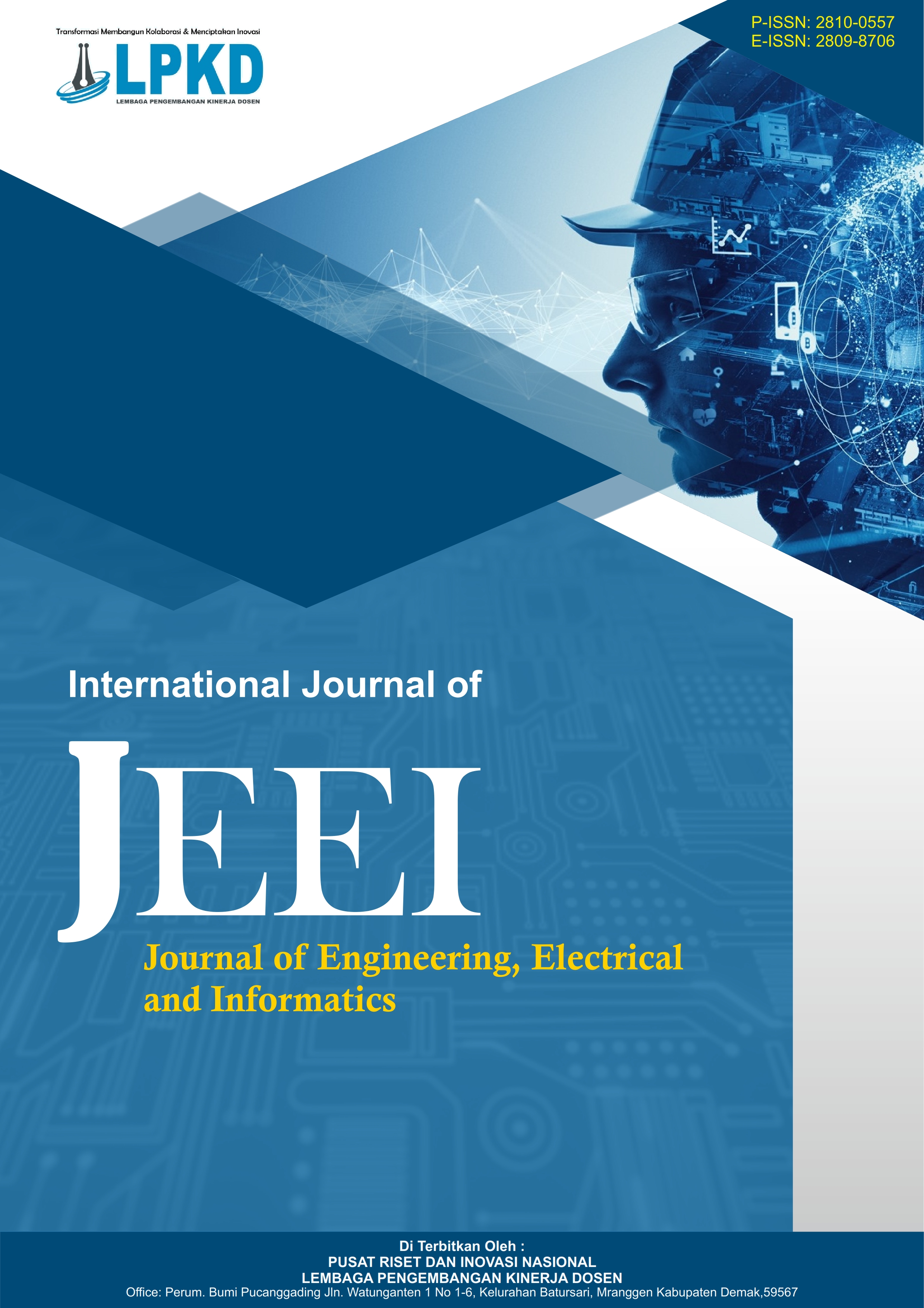Structural Performance Analysis of the Classroom Building at the South Minahasa Marine Training and Education Center Using the Pushover Method
DOI:
https://doi.org/10.55606/jeei.v5i2.4784Keywords:
Earthquake, Pushover, Structural Performance, Response Spectrum, SAP2000Abstract
Minahasa Selatan is a region with high seismic activity, requiring accurate structural design and evaluation against earthquake loads. This study aims to evaluate the seismic performance of a classroom building at the Marine Training and Education Center in Minahasa Selatan using the pushover method within a performance-based seismic design approach. The main issue addressed is how different response spectra—SNI 1726:2019 and the Indonesian Design Spectrum—affect structural performance assessment. The methodology includes literature review, structural modeling based on Asbuilt Drawings, and pushover analysis using SAP2000 software, referencing FEMA-356, FEMA-440, and ATC-40 guidelines. Results indicate that the SNI 1726:2019 spectrum yields higher shear forces and displacements compared to the Indonesian Design Spectrum, though the difference remains below 3%. Maximum shear force reaches 19,716.449 kN and displacement is 0.173 m (FEMA-440), while ATC-40 yields a minimum displacement of 0.1456 m and base shear of 3985.007 kN. The analysis places the structure within the Life Safety (LS) to Collapse Prevention (CP) performance range, suggesting it can maintain global stability and protect occupants during seismic events despite reduced stiffness. The study concludes that the building remains structurally safe and functionally adequate after an earthquake, and that variations in the response spectra result in limited impact on performance evaluation outcomes.
References
M. Boen, “Mitigasi Risiko Gempa di Indonesia: Tantangan dan Strategi,” J. Tek. Sipil, vol. 12, no. 2, pp. 105–116, 2011.
B. Suhardjono, “Perkembangan Bangunan Tinggi dan Tantangan Strukturalnya di Indonesia,” in Prosiding Seminar Nasional Teknik Sipil, 2015, pp. 25–30.
D. P. Subagio and R. K. Nugroho, “Seismic Hazard Analysis for Indonesia Using Recent Plate Data,” J. Tek. Geofis., vol. 4, no. 1, pp. 21–30, 2016.
I. Meilano and others, “GPS Analysis of Crustal Deformation in Indonesia: Tectonic Implications,” J. Geophys. Res., vol. 114, no. B1, 2009.
SNI 1726:2019 , Tata Cara Perencanaan Ketahanan Gempa untuk Struktur Bangunan Gedung dan Non Gedung. 2019.
S. Mazzoni, F. McKenna, M. H. Scott, and G. L. Fenves, “OpenSees Command Language Manual,” 2006.
ATC-40, “Seismic Evaluation and Retrofit of Concrete Buildings,” Redwood City, CA, 1996.
FEMA 440, “Improvement of Nonlinear Static Seismic Analysis Procedures,” 2004.
FEMA 356, “Prestandard and Commentary for The Seismic Rehabilitation of Buildings,” Nov. 2000.
K. PUPR, “SNI 1726:2019 – Tata Cara Perencanaan Ketahanan Gempa untuk Struktur Bangunan Gedung dan Non-Gedung,” 2019.
D. P. Billah and A. Alam, “Seismic Performance of Concrete Frame Buildings Using Pushover Analysis,” Earthq. Spectra, vol. 26, no. 3, pp. 803–818, 2010.
K. Chopra and R. Goel, “A Modal Pushover Analysis Procedure for Estimating Seismic Demands for Buildings,” Earthq. Eng. Struct. Dyn., vol. 31, pp. 561–582, 2002.
W. Dewobroto, “Evaluasi Kinerja Bangunan Baja Tahan Gempa dengan SAP2000,” J. Tek. Sipil, vol. 3, no. 1, pp. 8–10, 2005.
N. Prihatmoko and others, “Analisis Perbandingan Pushover dan Analisis Dinamik Nonlinear,” J. Konstr., vol. 13, no. 2, pp. 117–123, 2019.
R. D. Tarigan and A. Sari, “Evaluasi Kinerja Struktur Bangunan Eksisting Menggunakan Metode Pushover,” J. Rekayasa Sipil, vol. 15, no. 1, pp. 55–62, 2021.
A. B. S. Afif Salim, Rekayasa Gempa. Kepel Press, 2018.
T. Paulay and M. J. N. Priestley, Seismic Design of Reinforced Concrete and Masonry Buildings. Wiley, 1992.
H. Krawinkler and G. P. Reinhorn, “Pushover Procedure for Seismic Analysis,” J. Struct. Eng., vol. 123, no. 4, pp. 452–460, 1997.
H. Aschheim and M. Moehle, “Performance-Based Seismic Design Using Inelastic Response History Analysis,” Earthq. Spectra, vol. 8, no. 3, pp. 439–461, 1992.
J. Moehle, “Displacement-Based Design of RC Structures Subjected to Earthquakes,” Earthq. Spectra, vol. 18, no. 3, pp. 533–552, 2002.



.png)
.png)


